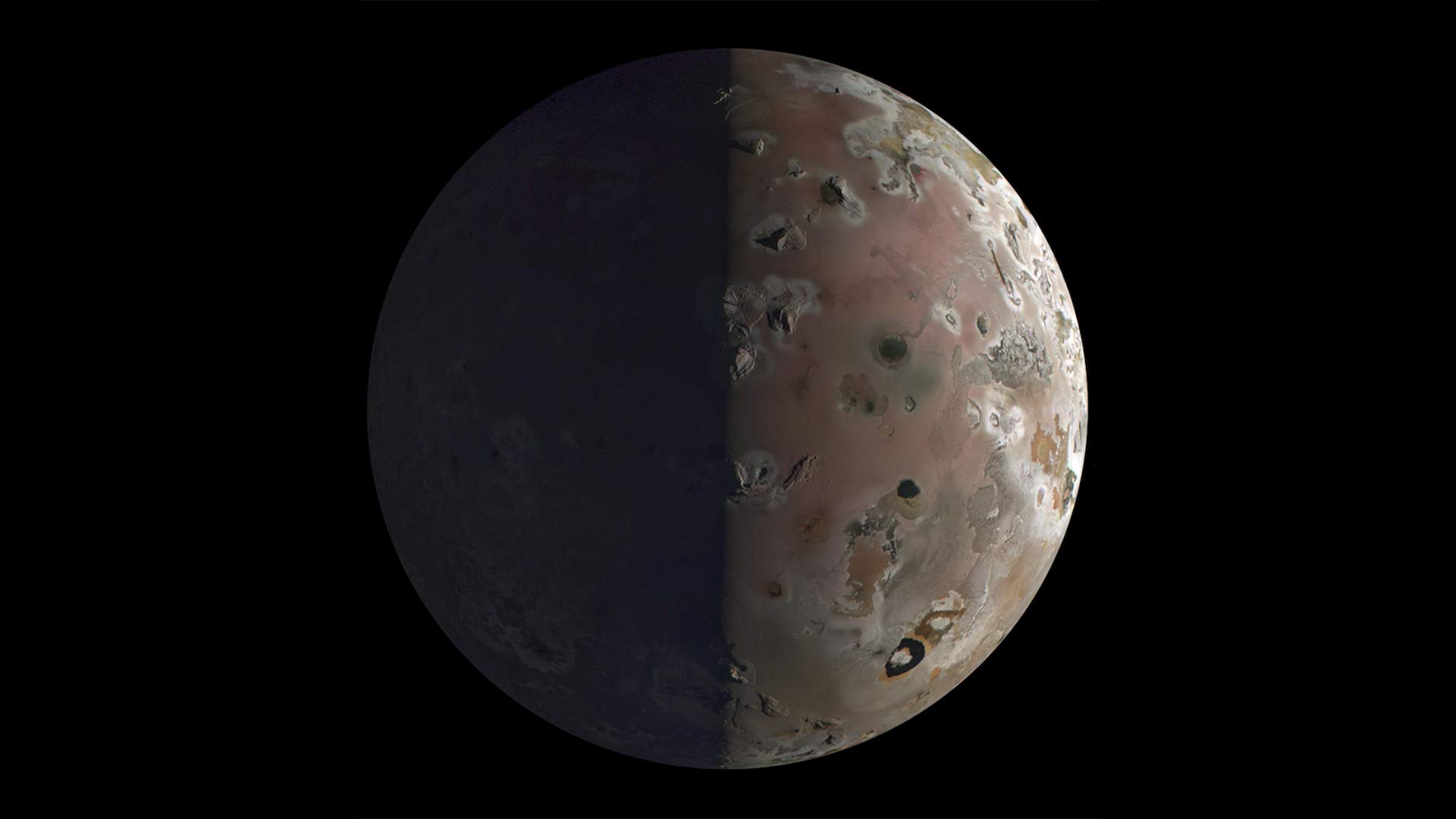 VIEW LARGER Photo of Io taken from NASA's Juno spacecraft, December 2023.
VIEW LARGER Photo of Io taken from NASA's Juno spacecraft, December 2023. University of Arizona Planetary scientists are looking at brand new pictures of Jupiter's moon Io.
The images were captured by the Juno robotic spacecraft. It's been orbiting Jupiter since 2016 and occasionally flies by and collects data from the planet's moons. Jason Perry is an imaging processing specialist for planetary science at the University of Arizona. He says the clarity of the photos is surprising.
"Io is in a high radiation environment and that can affect the quality of the images that we can get back," he explained.
Io orbits so close to Jupiter that the planet's gravity causes constant volcanic eruptions across its surface. Scientists call it the most geologically active object in the solar system.
Juno will make another fly by Io in February. After that, it might be several years before another spacecraft collects close-up pictures of the Jovian moon.

By submitting your comments, you hereby give AZPM the right to post your comments and potentially use them in any other form of media operated by this institution.